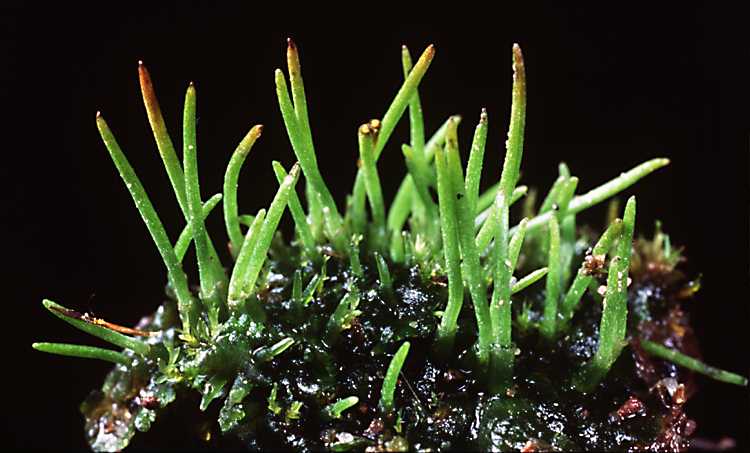Bryophytes:
The three phyla of bryophytes are mosses, liverworts, and hornworts. In the life cycles of bryophytes, the gametophyte is the dominant generation. Their gametophytes are generally only one or a few cells thick and because of this, it places all cells close to water and dissolved minerals. Most bryophytes lack conducting tissues that can distribute water and organic compounds within thick tissues. Some bryophytes have specialized tissues that function in water and solute condition. They have cell walls that lack the lignin coating on the outside and because of this their structure is not as great. The absence of lignin limits the height of bryophytes.
Pteridophytes:
They are seedless vascular plants. Lycophyta and Peterophyta are the two phyla of modern seedless vascular plants. Most pteridophytes have true roots with lignified vascular tissue. Plants that are in the pteridophytes category include horsetails and ferns. The sperm of ferns and all other seedless vascular plants are flagellated and must swim through a film of water to reach eggs. Because of this, seedless vascular plants are most common in damp areas.
Gymnosperms:
Gymnosperms lack the ovaries in which angiosperm ovules and seeds develop. Instead, Gymnosperm ovules and seeds develop on the scales of cones. The Mesozoic era was the age of gymnosperms. These four phylas are grouped as gymnosperms, gingko, cycads, gnetophytes, and conifers. The most familiar group of gymnosperms is the conifers because of the cones that they have.
Angiosperms:
They are better known as flowering plants. They are also vascular seed plants that produce the reproductive structures called flowers and fruits. All angiosperms are placed in a single phylum, this phylum is called phylum Anthophyta. The flower is an angiosperm structure specialized for reproduction. Sepals, petals, stamens, and carpels are the structures that basically make up the flower. Insects and animals transfer pollen from one flower to a another flower's female sex organ. This life cycle of angiosperms proves to be a highly refined version of the alternations of generations which is shared between most plants.
SOURCES: CAMPBELL BIOLOGY BOOK AND IMAGES FROM GOOGLE.

No comments:
Post a Comment